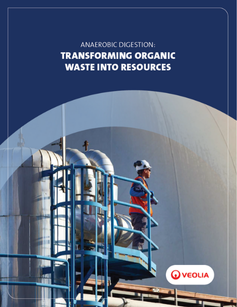Canada's reliance on exporting waste to the United States represents a significant economic and strategic vulnerability that needs urgent attention. For example, Ontario has exported over 40 million tonnes of waste alone since 2010, resulting in substantial economic losses. This dependence isn't due to technical limitations but rather insufficient domestic infrastructure investment.
Building Canada's domestic waste infrastructure is not just an environmental imperative—it's an economic opportunity and a matter of national resilience. While other developed nations have invested heavily in advanced recycling technologies, organic processing and waste-based energy facilities, Canada continues to ship valuable resources across its border instead of capturing the economic and environmental benefits at home. The path forward requires treating waste as a strategic resource rather than a disposal problem, positioning Canada to transform what is currently an economic drain into a driver of job creation, energy production and circular economy development.

The Scale of Canada’s Waste Dependence
Canada generates over 35.5 million tonnes of municipal solid waste (MSW) each year. While a portion is recycled or processed through organics recovery and energy-from-waste technologies, the majority is still sent to landfill—or exported for treatment outside our borders.
Beyond municipal solid waste, Canada also exports significant volumes of hazardous waste to the United States for specialized treatment and disposal. This cross-border dependency comes at substantial economic cost, with Canadian municipalities and businesses paying for U.S. treatment services while also bearing the burden of transportation costs and regulatory compliance across international borders. The arrangement leaves Canada vulnerable to policy changes, capacity constraints, and price fluctuations in foreign markets, while simultaneously exporting valuable economic opportunities that could support domestic job creation and infrastructure development. Moreover, the environmental costs of long-distance transportation and the loss of potential resource recovery within Canadian borders represent missed opportunities for circular economy development and energy generation.
This is not inherently a technical or environmental failure—many of the U.S. facilities receiving Canadian waste are modern and well-regulated. The issue is that these facilities are not ours. Canada lacks the domestic infrastructure needed to manage the full spectrum of its waste, particularly residual materials that remain after recycling and recovery. As a result, we remain dependent on foreign systems to close the loop on our own consumption and production.
This dependence carries a cost. Long-haul transportation and related emissions, missed opportunities for resource recovery and fees at out-of-country sites all drive up the price of disposal. These dollars leave our economy—supporting jobs, infrastructure and innovation elsewhere—when they could instead be building up capacity here at home.

Strategic Vulnerabilities
Canada’s reliance on foreign infrastructure to manage its waste isn’t just an economic consideration—it’s a strategic one. In an era of growing global uncertainty, building domestic resilience and adaptiveness has become a national imperative. Waste management is no exception.
Cross-border waste flows are subject to forces beyond Canada’s control. Shifts in U.S. environmental policy, local opposition to foreign waste or broader trade and diplomatic tensions could all affect the availability and cost of export-based disposal. The COVID-19 pandemic revealed how quickly international systems can be disrupted, and recent geopolitical tensions have only reinforced the risks of relying too heavily on foreign partners for essential services.
There are also more practical concerns. U.S. facilities may prioritize domestic volumes during peak periods, leaving Canadian shipments delayed or displaced. Transportation disruptions—from weather events to fuel shortages—can compound these issues, making long-distance waste hauling less reliable and more expensive over time.
When we depend on external infrastructure to manage what we produce, we reduce our ability to plan, respond and adapt. Waste independence isn’t just about keeping material flows within our borders—it’s about ensuring control, stability and accountability in a system that touches every community in the country.

The Case for Investing at Home
Canada’s dependence on foreign infrastructure to manage its waste comes at a cost—economic, environmental and strategic. Each time waste crosses the border, so do the dollars that could be supporting Canadian jobs, infrastructure and innovation.
Waste processing and recovery aren’t just public services—they are economic engines. Facilities that handle composting, anaerobic digestion or waste-to-energy create long-term employment, attract investment and anchor broader clean-tech ecosystems. They generate demand for skilled trades, engineers, equipment suppliers and maintenance services, while supporting public-sector priorities like emissions reduction and circular economy goals.
Canadian municipalities already have proof points. Facilities like Metro Vancouver’s Waste-to-Energy Facility demonstrate that we have both the technical expertise and operational experience to process waste efficiently, safely and locally.
Canada doesn’t need to start from scratch—we need to scale what already works. Doing so would reduce export dependence, provide more predictable pricing and service for municipalities and unlock new domestic value chains in energy, agriculture and resource recovery.
The question isn’t whether Canada can build a self-reliant waste system. It’s whether we’re prepared to treat waste as a strategic resource and invest accordingly.

Charting a Path Forward
Canada has the tools, technology and talent to take control of its waste future. What’s needed now is coordinated investment, leadership and a shift in mindset—from seeing waste as a burden, to treating it as a national resource.
A forward-looking strategy could include:
- Investment in anaerobic digestion, composting and WtE infrastructure across provinces
- Support for Canadian clean-tech firms working in waste recovery and resource transformation
- Policy frameworks that favor domestic processing over export
- Clear performance tracking of waste flows and outcomes to measure progress toward independence
Waste independence is not just a matter of convenience. It is a question of sovereignty, sustainability and long-term economic strength. Canada has what it takes to lead. The time to act is now.



